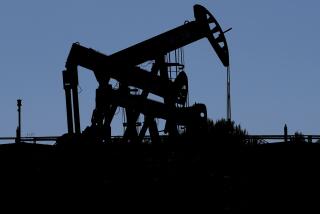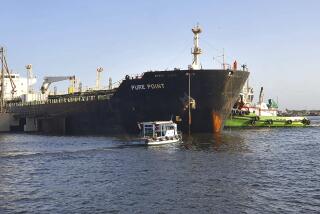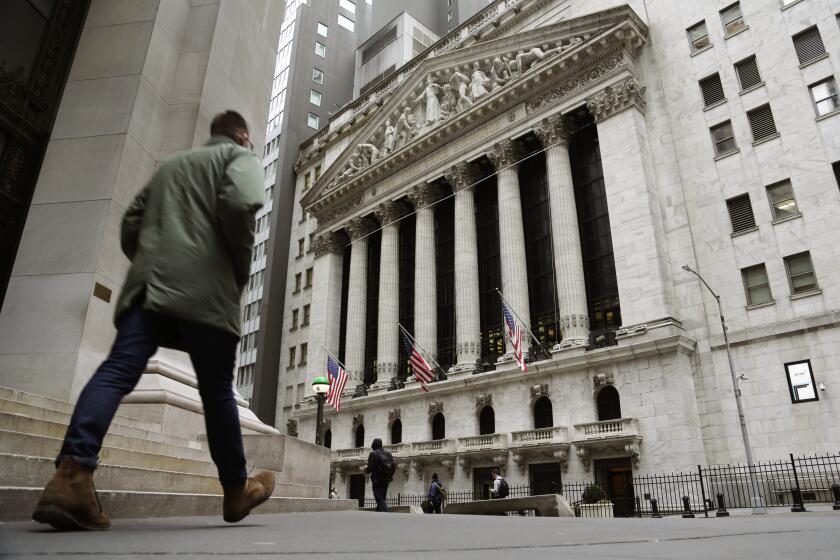News on Oil Getting Better All the Time
- Share via
The good news is that the U.S. oil industry has turned optimistic and is increasing its spending on the search for new oil and gas deposits.
The better news is that it is not doing this because it expects higher oil prices but because it believes current prices won’t go up or down too much but will prevail until at least 1992.
“Our projection is that the oil price will stay at $18 to $20 a barrel for the next several years and then it may begin to climb modestly,” says Robert E. Wycoff, president of Atlantic Richfield Co. And Arco’s opinion echoes those of other major oil companies.
That is good news. It means that fairly reasonable gasoline prices should continue--unless the U.S. government puts a new tax on gasoline, which is a real possibility.
It means that, after 15 years of trauma, the oil business is settling down, and companies can get on with the job of oil exploration and production--a global, high-technology industry that remains strongly U.S.-led.
It means that jobs can come back in economically hurting Louisiana, Texas and Oklahoma.
To be sure, Arco’s price projections may seem incongruous. Right now, oil is selling at much lower prices in the world’s spot markets--less than $16 a barrel for West Texas oil, under $15 for British North Sea and even less for Middle East crude. There are fears that the oil price will fall apart again as it did in 1986.
But such fears are myopic, says analyst Paul Mlotok of Salomon Bros., who notes that prices have begun to fall into a pattern--down in the first half of the year, up in the second half. Last year, the price hit $22.50 a barrel, and this year, says Mlotok, it will go to $20.
What has stabilized the price? An uneasy but real standoff between the Organization of Petroleum Exporting Countries and those oil producing nations outside of OPEC--mainly Britain, Norway, Mexico, the United States and Canada.
The standoff started with monopoly. In the last decade, the 13-nation OPEC cartel controlled more than two-thirds of the world’s oil production. And it used its stranglehold to raise the price, which went as high as $35 a barrel in 1979.
Balance ‘Reversed’
But it raised the price too high, causing cutbacks in consumption (fuel-efficient engines, better insulated homes) and leading other countries to push their own oil exploration and production. The North Sea’s output grew enormously, as did Mexico’s. Alaska’s North Slope is still increasing its output, as petroleum engineers wring new production from 20-year-old fields.
So now the balance is reversed. Of the 46 million barrels of oil the world uses daily, the non-OPEC countries produce almost 29 million--or 63%--and OPEC is reduced to 17 million or 18 million.
Which means the glut is enormous. OPEC is capable of producing 28 million barrels a day, so a 10-million barrel surplus overhangs the market. However, Saudi Arabia and Kuwait account for most of the surplus, and they are holding back production rather than trying to flood the market and torpedo the price.
They pushed the price below $10 a barrel in 1986, attempting to recapture market share for OPEC. But they succeeded only in cutting their own revenues and failed to discourage any important non-OPEC production. “No price can force out production in substantial quantities,” says Wycoff, 57, a mechanical engineer from Stanford who has worked 25 years for Arco. Once you’ve spent to develop the oil, in other words, you wouldn’t save money shutting it in.
So the outlook is that the Saudis won’t open the taps again and that the oversupply will keep oil prices reasonable for some years.
But aren’t the oil companies foolhardy to increase exploration in the face of such a glut? Not really.
For one thing, they’re not spending wildly on expensive prospects. At $29 billion, reports the Oil & Gas Journal, the industry is spending 11% more than last year but only one-third of the money they threw around in 1981. For another thing, exploration and development costs have come down, so companies can make money at $18 a barrel.
Finally, says analyst Barry C. Good of Morgan Stanley & Co., overseas development is brisk and profitable since nobody trusts OPEC, and countries everywhere want U.S. oil companies to help them develop their own supplies. Arco, for example, has a major gas deposit in a joint venture with China; the industry as a whole is spending $7.6 billion in foreign exploration.
Which is a double benefit, because it provides work for skilled U.S. oil workers, and because oil found anywhere pushes back the day when OPEC--holder of the world’s largest oil reserves by far--gets back its stranglehold. That’s when the bad news comes again.
More to Read
Inside the business of entertainment
The Wide Shot brings you news, analysis and insights on everything from streaming wars to production — and what it all means for the future.
You may occasionally receive promotional content from the Los Angeles Times.










